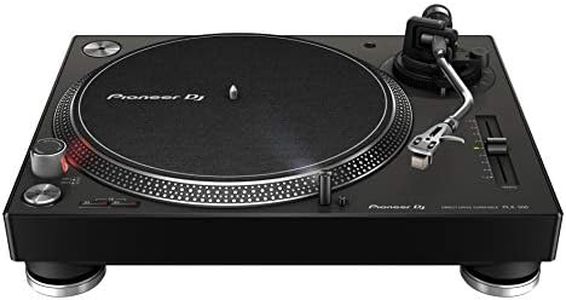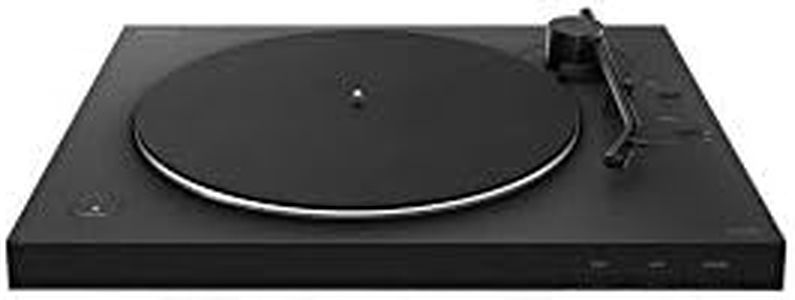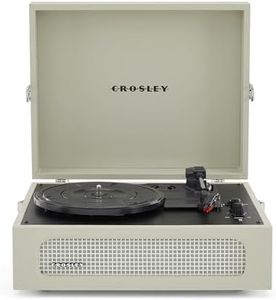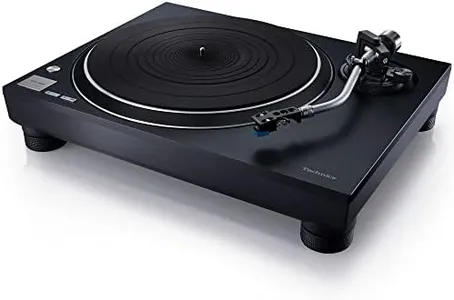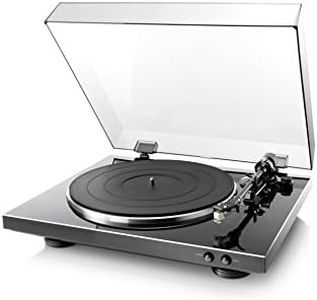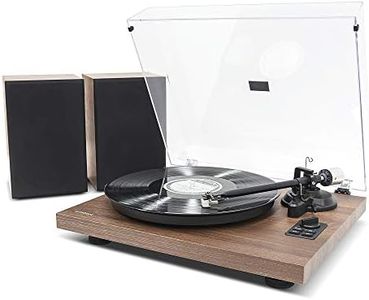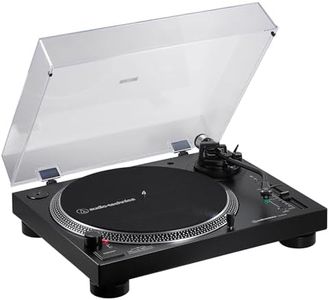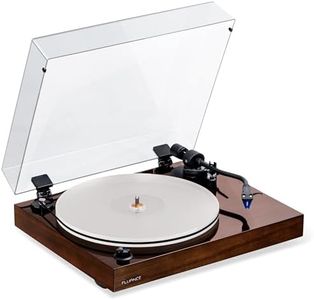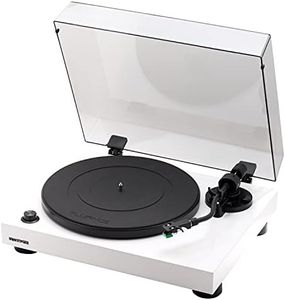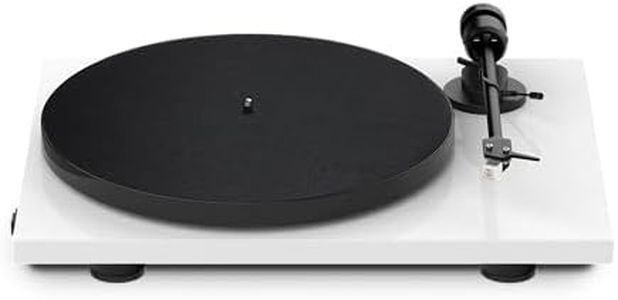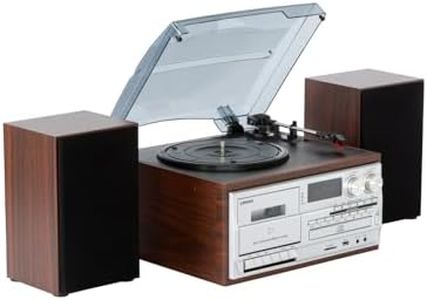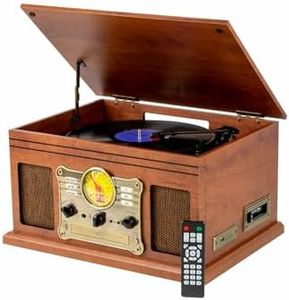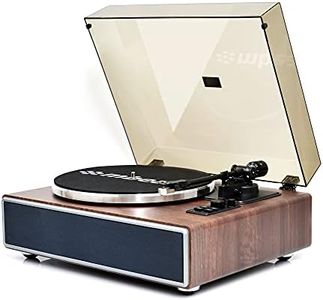We Use CookiesWe use cookies to enhance the security, performance,
functionality and for analytical and promotional activities. By continuing to browse this site you
are agreeing to our privacy policy
10 Best Record Players
From leading brands and best sellers available on the web.Buying Guide for the Best Record Players
Shopping for a record player can feel exciting and a bit overwhelming, especially with so many options available today. The most important thing to remember is to focus on your listening needs, your collection size, and your living space. Whether you are just starting to discover vinyl records or looking to upgrade from a starter model, you’ll want to understand the main features of record players that affect ease of use, sound quality, and compatibility with your other audio equipment. Reading up on what matters most will help you make an informed decision that matches your music preferences and lifestyle.Drive TypeThe drive type refers to how the platter (where you place the vinyl) is turned. The two main types are belt-drive and direct-drive. Belt-drive players use a rubber belt to spin the platter, often resulting in quieter operation and less vibration, which is great for pure listening pleasure at home. Direct-drive players attach the motor directly to the platter, which is preferred by DJs and anyone who wants quick start/stop action or plans to scratch records. For most casual listeners, belt-drive is a solid choice, while those interested in DJing may favor direct-drive.
Automatic vs. Manual OperationThis spec tells you how much control you have over playing the record. Manual record players require you to lift the tonearm and place it on the record and also return it to its resting position when the record ends. Automatic players do this for you at the push of a button, making them user-friendly, especially for beginners or those who want a more hands-off experience. There are also semi-automatic options that combine the two. Think about whether you want a hands-on experience with your records or convenience and choose accordingly.
Built-In PreampA preamp boosts the signal from the turntable so it can be used with regular speakers or audio systems. Some record players have a preamp built in, while others require you to use an external one. Built-in preamps make setup easier, especially if you want to plug your player directly into powered speakers or a stereo system without extra gear. If you already have or want to buy a high-quality separate preamp, you might prefer a turntable without one built in. Your choice depends on your current audio setup and whether you prioritize simplicity or customization.
Cartridge and Stylus TypeThe cartridge and stylus are the parts that read the grooves of your records. Most entry-level and mid-range record players come with a cartridge pre-installed, but higher-end models may allow you to upgrade or swap these parts for better sound quality. The stylus can be conical, elliptical, or other shapes, affecting how precisely it tracks the grooves. If you want the best possible sound and plan to upgrade over time, check if the model allows cartridge replacement. For newcomers, a fixed, quality cartridge is usually enough.
Connectivity OptionsThis refers to how you can hook up your record player to speakers, amplifiers, or headphones. Traditional models may use RCA cables, while modern versions can offer USB outputs for digitizing your vinyl or even Bluetooth for wireless connections. Choose a model that fits how you want to listen: if you have vintage speakers, RCA is essential; if you want wireless convenience, Bluetooth is handy; if archiving vinyl is your goal, look for USB features.
Speeds SupportedRecord players typically support one or more of the common record speeds: 33 1/3 RPM (long-playing albums), 45 RPM (singles), and sometimes 78 RPM (older shellac records). Consider the types of records you plan to play. Most modern records use 33 1/3 or 45 RPM, so a player that supports both is usually enough. If you have or plan to buy older 78 RPM records, make sure your player supports this speed.
Build QualityBuild quality covers the materials, weight, platter, and overall construction of the record player. Heavier models with stable bases help reduce vibration, which leads to better sound. If you want clearer audio and less skipping, a sturdier build is important. For occasional listeners or those with limited space, lightweight and more portable models may be a better fit, but may sacrifice some fidelity.
